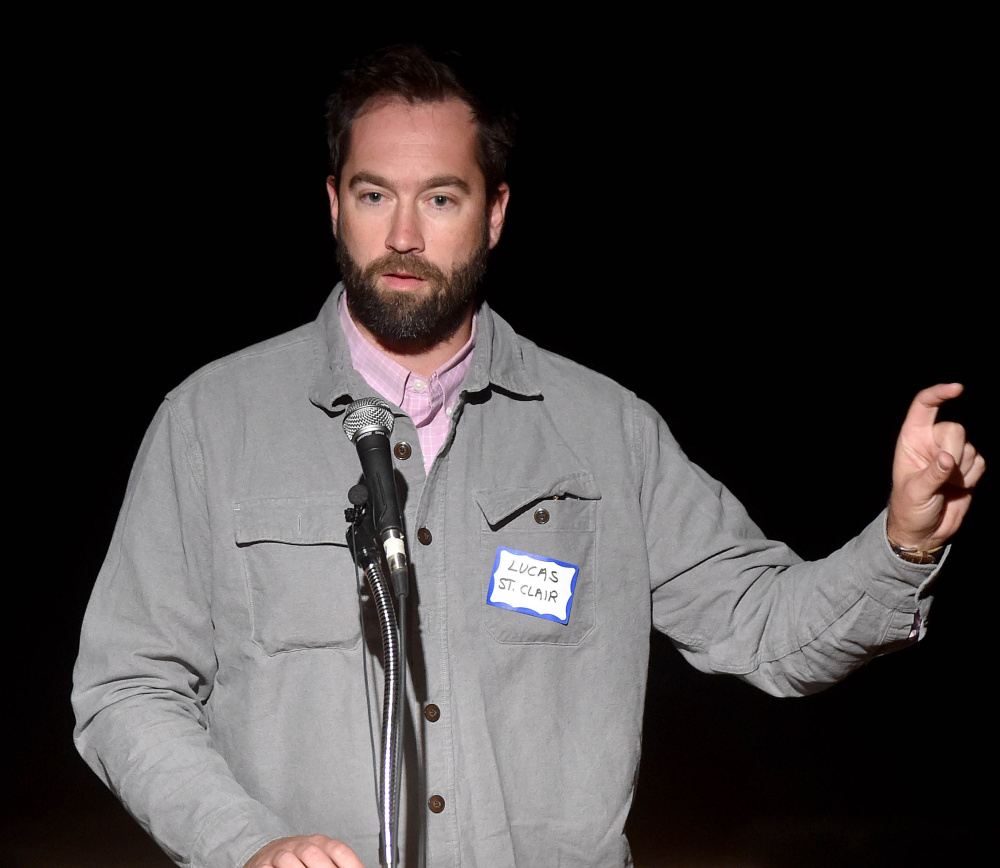UNITY — A leader behind the designation of a new national monument in the Katahdin area said Friday that while the transition from private forestland is complex, debate over the existence of the monument “immediately went away” when the Obama administration announced the move on Aug. 24.
“I’ve been trying to think about what to say, and I’ve struggled because I’m not trying to convince anyone anymore. That conversation is over,” Lucas St. Clair, president of Elliotsville Plantation Inc., told an audience at the Unity College Center for the Performing Arts on Friday.
St. Clair and his mother, Burt’s Bees co-founder Roxanne Quimby, were behind the donation of more than 87,000 acres of forestland owned by their family to the National Park Service, an effort that resulted in President Obama’s designation of the Katahdin Woods and Waters National Monument last month at almost the exact time of the park service’s 100th anniversary.
In the roughly three weeks since the announcement, more than 700 cars have visited the monument – about the same number the area saw for all of last year, St. Clair said Friday in his first speech to a large audience since the designation.
As the area around the monument braces for growth, St. Clair said it will require thoughtful planning to take into consideration the rural economy, traditional land uses such as hunting and snowmobiling, and best conservation practices, including the impact on and relationship to next-door Baxter State Park.
“We’re fortunate to have the ability to reflect back on what has happened over 100 years of history in the National Park system, but we also have to think really critically as we move forward,” St. Clair told an audience of about 75 people. “There are a lot of really interesting questions in front of us and a lot of opportunity for planning and thinking things through.”
After the monument designation was announced, St. Clair said debate “immediately went away and people started looking forward.”
Some, including Gov. Paul LePage, maintained their opposition immediately following the announcement, but other groups have gravitated toward working with the National Park Service. Unity College President Melik Khoury applauded the designation on Friday, calling it a “wonderful opportunity” for students and an example of how they can study the intersection of human nature, the economy and the environment.
“In addition to giving a boost to the economic possibilities in northern Maine, this project has also created 100 years’ worth of viable projects for educators and sustainability leaders and for our very own students,” Khoury said.
A Boston Globe and Colby College poll conducted in early September showed that 59 percent of the Maine residents surveyed were in favor of the monument designation.
“A lot of people who were opposed to the national monument itself have come to the decision that they’re going to work to make it as positive as they can now that it’s become a reality,” Raymond Foss, town manager in Patten, one of the communities that surrounds the new monument, said in a phone interview Friday. “That’s sort of what I’ve said as town manager, is that our job now is to make the best of it.”
Still, the future of the monument is not without its issues to be worked out.
Now, officials in Patten are working to address a temporary ban on all-terrain vehicles in the monument, something that Foss said “is a real issue and needs to be resolved.” He added, though, that he already has seen an increase in tourists “from away” and heard anecdotally from some local businesses that they have been busy.
St. Clair did not mention the ATV issue on Friday, but did say that before the designation, officials worked closely to ensure that certain traditional uses for the land such as snowmobiling and hunting would continue to be allowed in parts of the monument because “those things were really important to us and to the folks of the Katahdin region.”
Bob Myers, executive director of the Maine Snowmobile Association, laughed Friday when asked about St. Clair’s statement that debate has dissipated and said “it’s not a matter of choice anymore.”
Myers said there remains concern among the snowmobiler community about access on trails this winter, though they have not been made aware yet of any restrictions.
“It’s just something we have to learn to live with,” he said of the monument. “You can’t unfry that egg.”
Other concerns that St. Clair said will be addressed in the coming months include those of the local logging and timber industries and the impact on and relationship to Baxter State Park.
By 2026, St. Clair said he estimates the monument will attract about 250,000, or roughly 10 percent of the number of people that visit Acadia National Park each year.
In the meantime, one thing he said has become clear is the importance of listening to people in the area about their concerns.
“That listening process is of the utmost importance now that the resource is there, and we can look around at other national parks around the country and see where there have been good ideas implemented and where there have been bad ideas implemented,” St. Clair said.
Send questions/comments to the editors.




Comments are no longer available on this story